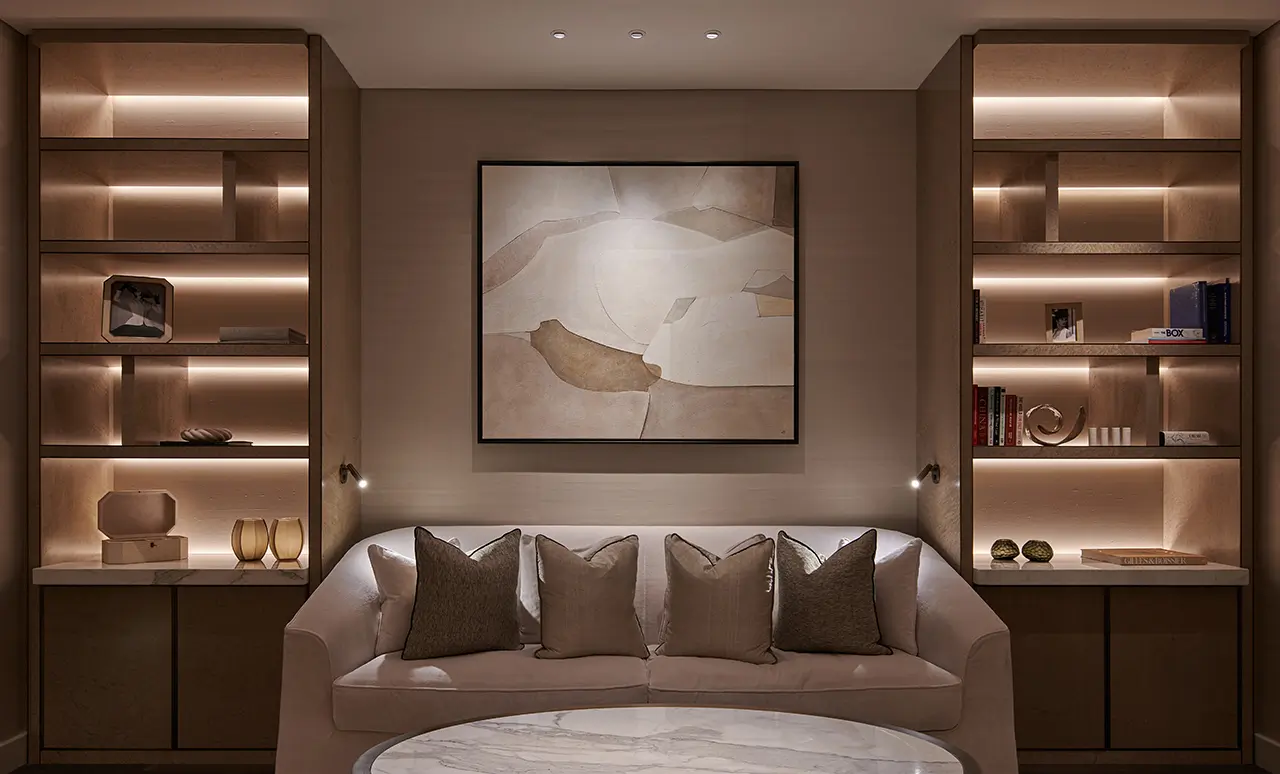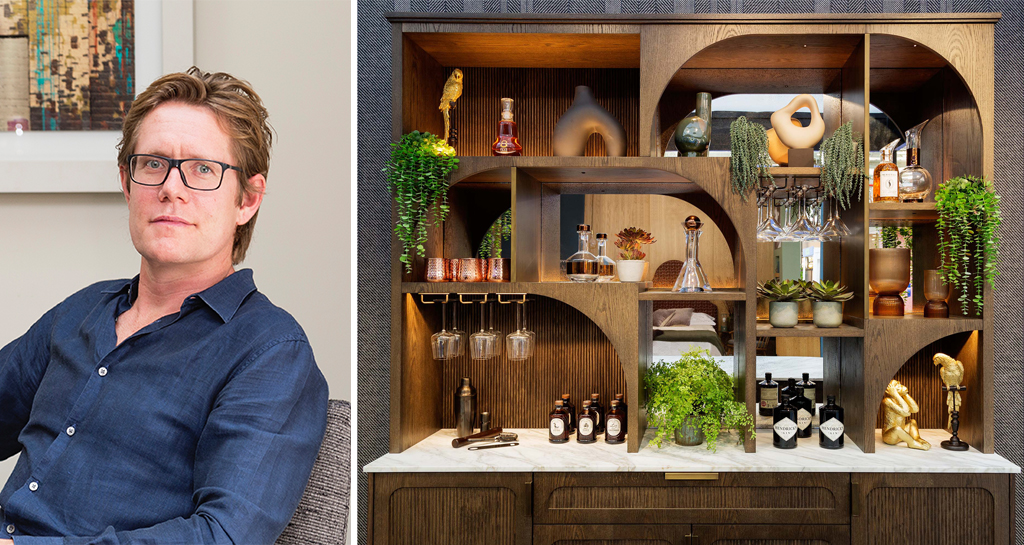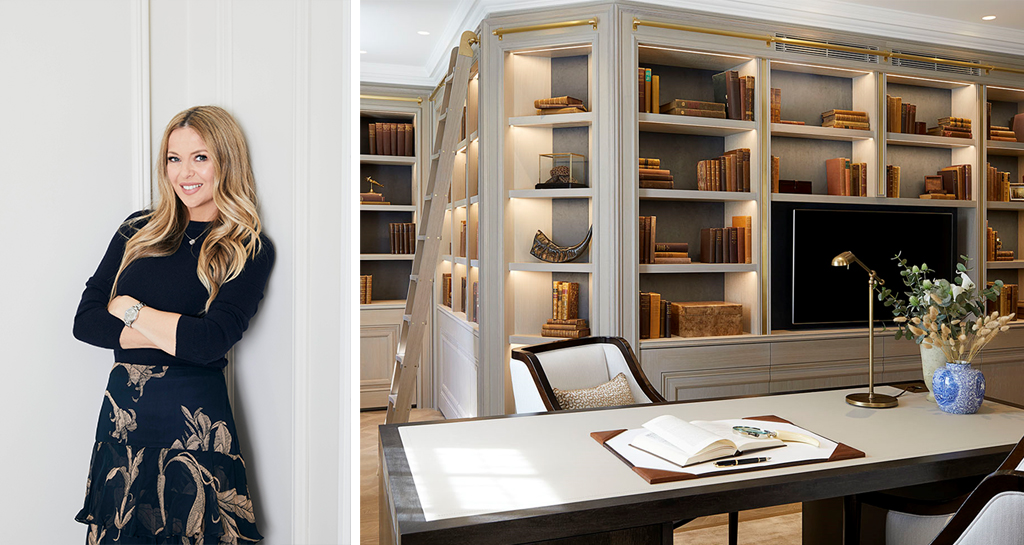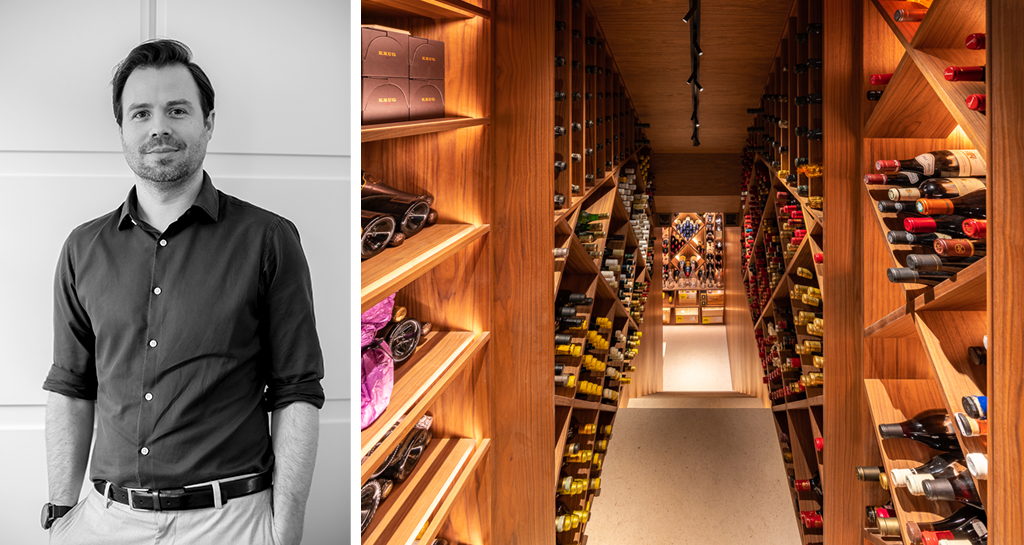
Bespoke joinery within a scheme can be both a practical and aesthetic feature, enhancing the rest of the interiors. When carefully planned, the potential of joinery can be maximised by effective joinery lighting, considerations of what will be displayed and finishes and materials chosen.
Drawing together the expertise of luxury joinery company HUX London, award-winning Interior Designer Laura Hammett, and our Design Director Luke Thomas, our April event ‘Maximising the potential of Joinery’ was a fantastic masterclass into the ways to incorporate and enhance joinery within a scheme. We’ve compiled the 5 key takeaways from each panellist, and the industry trends they are seeing.
Felix Milns, founder of HUX London

- Understand the clients needs and what the function of the joinery is, particularly if it’s open shelving. What is going to be displayed? Does it need to be lit from above or below, or in some cases both. Think about lines of sight and make sure you see the light, not the fitting. Think about how to use baffles, downstands, and angled LED profiles cut into the underside of shelves.
- We’re seeing a trend towards fluting, curved edges and incorporating more interesting textures, which give a great opportunity to use lighting to ensure we’re making the best showcase of materials used and emphasising special finishes to their fullest.
- Don’t light for the sake of lighting. If a piece of joinery has all open shelves it doesn’t mean every shelf has to be lit. This could end up being distracting rather than enhancing.
- Lighting should never be an afterthought. A joinery design and lighting solution should be created seamlessly and can give the most incredible results.
- Ease of maintenance and access are important to a beautiful joinery solution. To get the best results consider what access you need and where best to locate drivers and how to conceal them yet still allow easy access.
Laura Hammett, Laura Hammett Interior Design

- Be big on the briefing stage before you start designing. Get into the details and understand what the client needs their home to do. Joinery is key when it comes to the functionality of the home and storage is everything, so make sure you’re balancing the correct ratios of storage vs. display space for what the client intends to use the space for.
- Design joinery with the rest of the space in mind, not in isolation. Is the joinery being placed into an intimate reading nook, a large open space, a TV room? What mood do you need to create? Is there another strong piece fighting with it on the other side of the room?
- Lighting is key to connecting a joinery piece to the rest of the room. By integrating subtle lighting, you balance the light out and avoid having a really bright spot in the middle of the room. You can also connect joinery to the rest of the space with materiality. I often soften a very hard, strong joinery look by adding a suede or wallpaper backing, connecting it to the soft furnishings in the rest of the room and making the space feel harmonious.
- Think about what you’ll be styling the joinery with while designing it. I tend not to have too much open joinery low down as you’re limited with what styling items can go on the bottom shelves, there’s only so many boxes and baskets you can add! As a rule I tend to keep the lower portion of joinery as closed storage space and the top for open display shelving.
- We’re noticing a trend in lighting in general, our clients still want layers and different scenes, but they want to simplify things and not have too many circuits. So keep lighting easy to use.
Luke Thomas, Design Director at John Cullen Lighting

- Layer lighting within a joinery unit to allow for flexibility to create different moods for a variety of occasions. This can include a combination of point source lighting for accent, with joinery linear lights for a softer ambient light. The different elements should be controlled independently to allow a full range of adjustments.
- The focus of any joinery unit should be the items on display and the materials being used with lighting used to elevate those elements but not dominate them. To provide a discreet solution, the joinery lighting should be as small as possible and concealed from view to prevent glare. Seeing the light source can destroy the magic of the illusion.
- Ensure that the lighting design, interiors and joinery production is coordinated between all parties to deliver a successful installation which fully considers all elements. Lighting needs to be considered as soon as the design intent drawings have been sketched up.
- Testing a variety of lighting solutions can help identify which will be the most effective for a particular installation. The colour temperature of the light, how it is concealed and it’s position within the unit can all have a significant impact on the final outcome.
- Consider the impact of the lighting from each unit on the rest of the interiors and architecture. If the lighting needs to contribute towards the overall light levels of the room this needs to be allowed for.
Have you got a joinery scheme you would like to elevate with lighting? Get in touch with our design team to see how we can help.
Follow us on Instagram for the latest inspiration and lighting ideas.